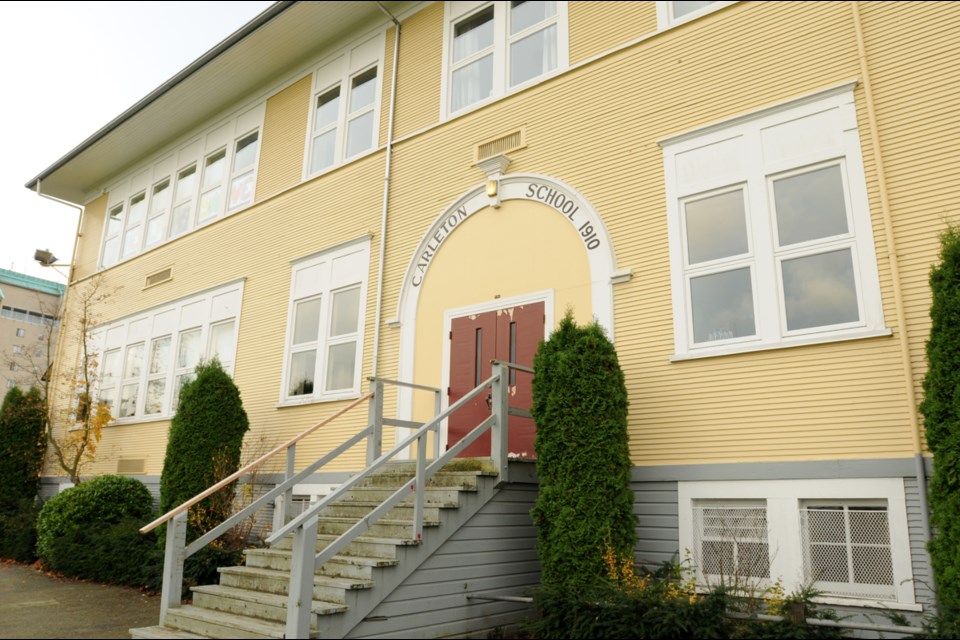Note: The Courier is reposting this 2010 story in light of a new report could be closed due to low enrolment. The schools in this story did not close. Instead, a moratorium was placed on school closures. In January, a.
Trustees decide the fate of Champlain Heights annex, Sir Richard McBride annex, Sir Guy Carleton, Queen Alexandra and Sir William Macdonald elementary schools Dec. 14.
Closure threats ignited five grassroots campaigns to save the East Side schools. Despite tight timelines and limited resources, activists rallied communities, launched petitions, attended meetings, dreamed up ways to attract students, and secured provincial and federal political support. It’s uncertain if that’s enough to keep doors open as trustees grapple with budget shortfalls and a declining student population. Public school enrolment peaked in 1997 with 57,575 kindergarten to Grade 12 students, but slumped to 51,901 this year in a system designed for 60,343.
The VSB hacked $17 million from its 2010/11 budget and predicts another $9.6 million shortfall in 2011/2012, followed by a $5.6 million shortfall in 2012/13. If all five schools close, it saves a relatively insignificant $1.4 million, but the alternative is slashing already gutted programs and services.
Critics see closures as an attack on public education and say the cost to displaced students is immeasurable. While closure is anathema to some, others suggest students can adjust.
“Children are amazingly resilient and at the end of the day are more adaptable than we are,” superintendent Steve Cardwell said at several feedback meetings.
After the recent sessions, board chair Patti Bacchus, a Vision Â鶹´«Ă˝Ół»trustee, tweeted: “So far no real solutions to underlying problems but some interesting ideas. Can we make them work and still solve the bigger challenges?”
Clear winners are unlikely, regardless of the decision, but the stories that follow capture the efforts of five schools as they fight for survival.
BROKEN PROMISES
Five years ago, then Liberal education minister Tom Christensen stood in Sir Guy Carleton elementary for a pre-election press conference announcing a $254-million seismic upgrading program for 80 B.C. schools over three years — 16 in Vancouver, including Carleton.
Welcome news — except it never happened at Carleton. The 114-year-old school not only remains at high risk in an earthquake, but with an enrolment of 376 in kindergarten to Grade 7, it would be the most-populated school in B.C. to close and its students split among as many as six schools. Supporters feel betrayed.
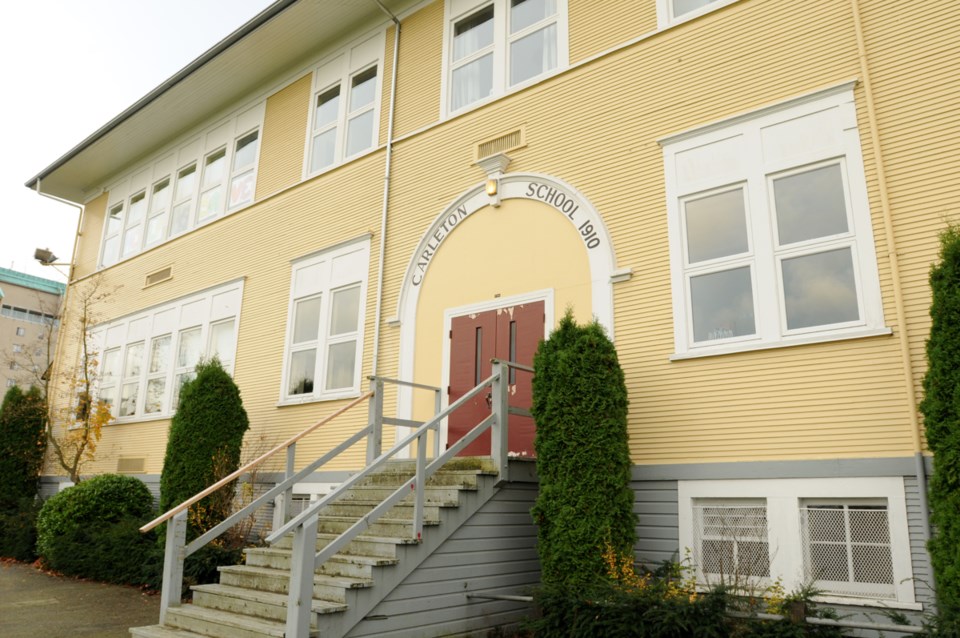
“There’s a long history of broken promises around Carleton and we’re sick of being short-changed,” complained a long-time Collingwood resident at a meeting that attracted more than 500. “Stand your ground with the provincial government even if it means they’ll fire you.”
Speakers intermittently pleaded, then demanded, the board spare Carleton. NDP MLA Adrian Dix lent his support to the battle, and supporters have published a 34-page case against closure, but victory is uncertain.
Three Collingwood schools were considered for closure, but only Carleton made the shortlist. Supporters are convinced the student population will climb, securing a letter from the president of Wall Financial Corporation indicating more than 800 residential housing units are proposed for a new Collingwood development. They also point out Carleton survived depressions, recessions and world wars.
Parent Advisory Committee chair Ann Wong, who believes the process has lacked transparency, maintains closure is shortsighted and the threat has placed undue stress on children and families.
“I don’t even think closing a school is an option. Honestly it’s just wrong,” she said. “Let’s work together to look for options that will work for the community.”
More than 7,000 signed a petition to save Carleton, whose sprawling property features several buildings, including a small, historically significant yellow schoolhouse damaged by arson a few years ago.
The property, assessed at more than $22 million, has split zoning — commercial and single-family residential — with redevelopment potential. The district estimates $468,120 in annual savings if Carleton is closed.
Critics argue the loss would be too severe. “Carleton and Collingwood Neighbourhood House are the two pillars of Collingwood. Should one pillar fall or be allowed to deteriorate, the result will be devastation,” warned teacher Scott Macdonald.
LITTLE RED SCHOOLHOUSE
Champlain Heights annex’s storybook appearance is undeniably appealing. Located at the northern tip of Everett Crowley Park, its treed surroundings, well-kept red schoolhouse, small student population and proximity to a community centre provide a welcoming introduction to formal education, particularly for special needs and ESL students.
Eighty-eight kindergarten to Grade 3 students attend the annex, which has space for 103. Opened only 24 years ago, the building contrasts with the district’s mostly aging stock — upgrading isn’t needed any time soon. Closing the annex, whose site is assessed at $9 million, would save $175,134 annually. Champlain Heights underenrolled main school, and other nearby schools, can easily fit displaced students.
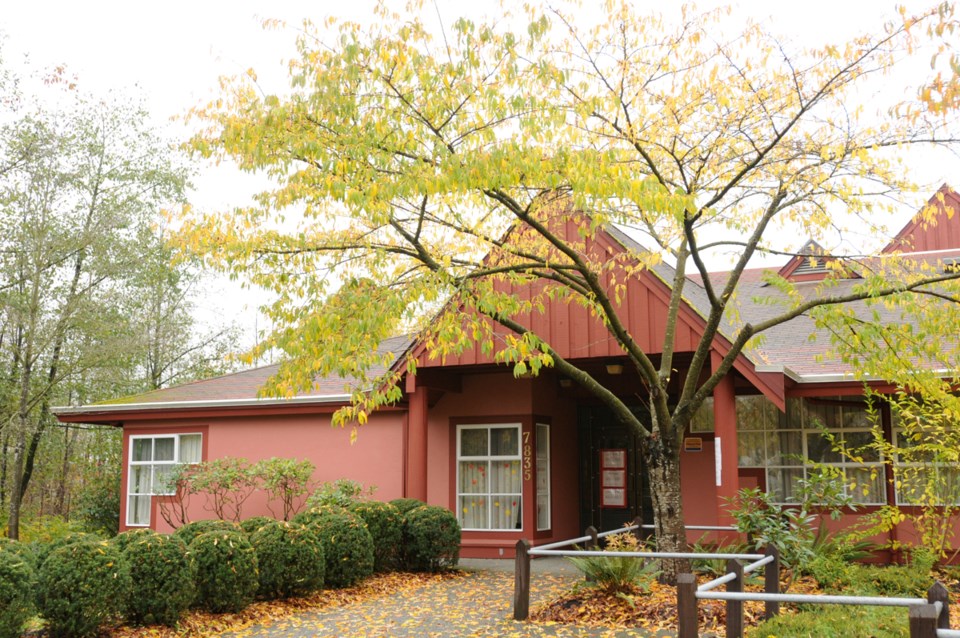
Development planned for East Fraserlands may drive up student numbers, but that’s not expected for years. While new schools are envisioned for the area, there’s no guarantee when or if they’ll be built.
Parent advisory council chair Joanne Kautz-Allard isn’t surprised the annex made the shortlist. Closure rumours circulated ever since her son started school. When rumours turned to reality, parents launched a “Good things come in small packages” campaign. Speakers at an October meeting wore Save our School arm bands, carried protest signs, and affectionately referred to the annex as “the little red schoolhouse on the hill.” At the second meeting, they donned red clothing.
Smartboards in every class, Grade 3 students’ ability to take leadership roles, the condition of the building, and the fact it’s close to capacity, are among arguments to keep it open. Many parents walk kids to class, some pushing strollers — an uphill trek made more difficult if they’re expected to climb further to the main school whose after-school program was recently eliminated. Parents warn they’ll send kids to Burnaby’s Suncrest school, which is closer, further eroding Vancouver’s depleted enrolment and associated per-student provincial funding. If only 34 fled, it would siphon more than $200,000 from the district.
Kautz-Allard wants trustees to reconsider. “Build communities, be creative, generate income, but not at the expense of children,” she said. “I ask you as a school board whose ultimate focus is to educate children — find a better answer to this problem. Get out your erasers, erase your answer and try again.”
Liberal MLA Kash Heed and Liberal MP Ujjal Dosanjh back the annex’s campaign, but some parents, such as Carolyn Grafton, are cynical.
“I don’t think these stories will make any difference to you. We’re at the mercy of gutter politics and finger-pointing between the Â鶹´«Ă˝Ół»School Board and Ministry of Education,” she told trustees, calling projected savings “a drop in the bucket.”
“You can close our school, but where will that get you? I just can’t see the business case. Move out of the school board office and lease out the palatial office on Broadway and stop the pretense of consulting with the public.”
BATTLE GROUNDS
Ron LaRochelle rolls up to Sir William Macdonald elementary one afternoon to pick up his granddaughter Charlotte. The Grade 2 student is one of many generations of the family to attend the historic inner city school on East Hastings.
LaRochelle’s deep roots are obvious as the wheelchair-bound 61-year-old casually lists relatives, past and present, who’ve attended the 105-year-old school. Students trickle through solid oak doors carved by First Nations artist Henry Robertson.
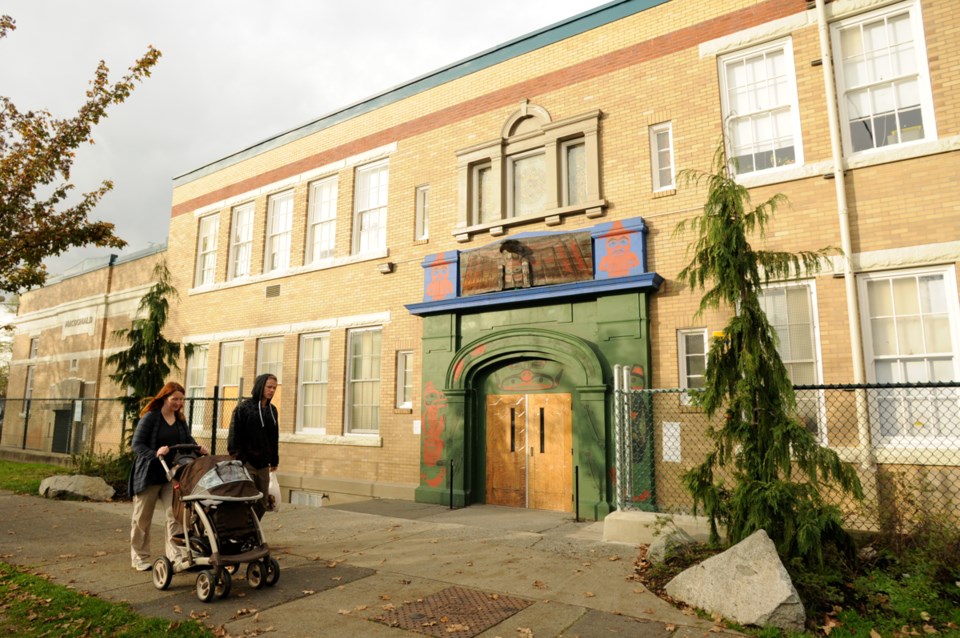
Framed by painted native figures, and topped by a three-dimensional eagle, the doors’ design depicts salmon swimming as if to spawn, an aboriginal storage box guarded by wolves — protecting education — and a black bear and cubs.
Its enrolment of 239 in 2000 has dwindled to 70 students, mostly from aboriginal and Chinese communities, many with special needs. The school runs at one third of its capacity, making it difficult to offer programs and organize classes efficiently.
LaRochelle speaks fondly of Macdonald.
“The First Nations kids are well taken care of by First Nations staff,” he said. “It would be a big loss to the First Nation and Chinese community, and everybody here, if it closes. It makes you wonder where they’ll go. There’ll be a lot of lost history.”
That sentiment was echoed repeatedly, and often emotionally, at an October consultation meeting kicked off by Native drumming and songs.
On hand were students, former students, parents, staff, business people and politicians, including Vancouver-Hastings MLA Shane Simpson, and Burnaby city councillor Nick Volkow — a Macdonald graduate from decades ago.
“To close this school, in particular, would be criminal,” the 58-year-old said. “You stand with the people of this school and these people will stand with you.”
Few were angrier than parent Pam Sitar.
“I’m pissed off. I’m really, really angry. Poor people, disadvantaged people, get screwed and I’m sick of it.”
Sitar worries the land — assessed at $15.4 million — is headed for development at the expense of needy families. [It’s unclear what would happen to closed schools, although the VSB can’t sell property or lease it for more than 10 years without provincial approval.]
Former teacher Connie Barkase came out of retirement to fight for the school, fearing few others would.
“I wake up every morning saying what am I going to do today because I’ve got to do something,” she told the Courier.
Cherise Craney, who struggled to find an appropriate school for her disabled 11-year-old daughter Bronwyn until she found Macdonald, heads up the hastily formed parent group. Her daughter doesn’t adapt well to change or to highly populated schools. “If you put her in a school of 600 children, she will be invisible,” she told trustees.
Closure critics see Macdonald as the victim of benign neglect, but Macdonald’s resolve can’t be underestimated. In 1997, parents camped outside the school board office for 43 days demanding increased staffing and resources. Craney believes a decision to close it would have implications far more costly than projected annual savings of $275,593.
“If we look at [students] as numbers, we’re going to be looking at them as numbers when they grow up. These are vulnerable kids. They will be statistics again.”
ACCIDENTAL ACTIVISTS
Lilli Wong can’t help feel resentful. The mother of a five-year-old and five-month-old is on maternity leave, but can’t enjoy it.
In September, Wong discovered Sir Richard McBride annex, her daughter’s small, one-storey school at 4750 St. Catherines St., could close.
The 40-year-old has spent most of her time since then rallying parents, attending meetings, designing a Save McBride Annex website and crafting reasons to save the 47-year-old kindergarten to Grade 3 school next to Grays Park. Wong voiced frustration at a meeting on the annex’s future.

“It’s unfair how this burden to save the school has gone down to parents,” she said.
The accidental activist imagined sending both children to McBride annex. With that in jeopardy, she’s joined the small group fighting to save it.
“It’s a fantastic school. It’s right on the park. It’s very intimate — that’s one of the benefits and also one of its downfalls — the intimate class sizes,” Wong told the Courier.
Its enrolment fell to 63 this year from 151 in 2000. The VSB estimates $171,462 in annual savings by closing the school whose property is assessed at $5.8 million.
The annex has the fewest students of all schools eyed for closure, translating into a quieter voice, evident at the first consultation meeting that attracted about 40 people — only seven spoke. It was the lowest turnout of the first five meetings, although the second meeting was better attended.
What activists lack in numbers, they’ve tried to compensate for in a reasoned case to keep its doors open, with proposals and concerns detailed on their website.
Enrolment tumbled after the Fraser Villa housing complex was demolished, but some predict a population boom with hundreds of new units under construction and neighbourhood densification.
Among ideas is to create an “edible school yard” magnet program featuring an organic garden for urban students modeled on a successful program in Berkeley, Calif. Others suggest introducing a daycare or pre-school, attracting seniors or children’s programs, or starting Tagalog immersion. The VSB warned parents at all five schools new students must come from out of district or private schools — shuffling the students around won’t address declining enrolment.
Parent Dr. Jennifer Kong is pushing for a three-year moratorium on the annex’s closure while assumptions about the VSB’s enrolment projections and other data is examined, along with potential fallout, including extra costs, from sending more students to the main school. It will allow time to see if new developments increase enrolment and whether the provincial government implements junior kindergarten.
It also gives the board time to consider McBride proposals and adopt its own strategies to bump up enrolment district wide.
If the annex closes, and students are dispersed among several schools, activists fear troublemakers will hang around the vacated building and adjacent Grays Park, where Churchill student Deward Ponte was murdered in 2008. Travel distances would increase and parents with babies might have trouble accessing multi-storey schools, according to annex supporters. Wong doesn’t want to contemplate it.
“There needs to be more done to look at the options. Having a school close is the death of a neighbourhood,” she said.
ARTFUL PROPOSAL
Located on a busy corner at Clark and Broadway, Queen Alexandra elementary opened as a one-room schoolhouse more than a century ago and is now a multi-storey landmark in an inner city neighbourhood.
Twenty three per cent of students are aboriginal. Those remaining are typically new immigrants or have been in Canada less than five years. It’s a designated inner city school and several organizations provide enrichment activities, including after-school piano lessons through UBC’s Heart of the City Piano Program Student Society and the Sarah McLachlan Music Outreach. Kidsafe and StrongStart programs, along with the subsidized breakfast and lunch service, tip off Queen Alex’s needy status.
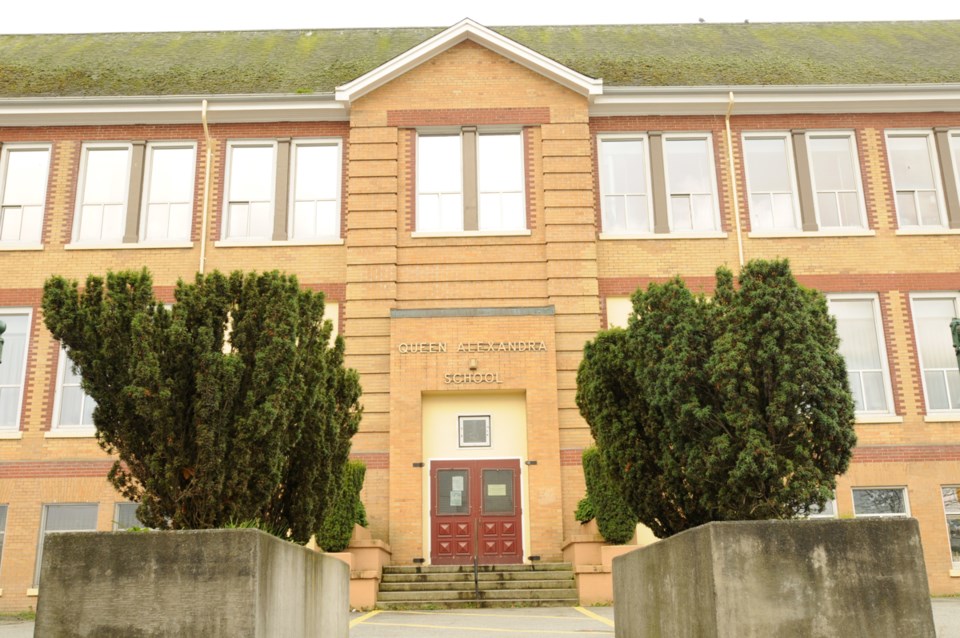
In 2000, enrolment hit 334, but it slipped to 176 this year. The school, which is assessed at $18.7 million, has space for 288. Split zoning — multiple-family zoning on East Broadway and single family residential on East 10th — coupled with its central location mean it has considerable redevelopment potential, according to the district.
The closure report notes surrounding traffic and noise are bad for learning and shutting its doors would produce annual savings of $358,576. Nearby schools can accommodate displaced students.
Closure opponents argue the school’s loss would be a hardship on some of the city’s neediest families. Renita Fernandez, co-chair at Queen Alex, fears friendships and tight relationships with teachers will be severed, while students may lose valuable enrichment opportunities.
Hopes are pinned on transforming the school into a district fine arts program similar to Nootka elementary’s, which has a wait list.
The pitch, by staff and parents, is endorsed by arts organizations, NDP MLA Jenny Kwan and NDP MP Libby Davies. A focus on multi-cultural themes would highlight students’ diverse backgrounds. Supporters want a four-year commitment to prove it can work. “This hardly seems an idea that would need a sales pitch,” one teacher said.
Queen Alex would be the first inner city school to offer such a program. Proponents cite studies that project-based, arts-integrated learning is highly correlated with success, particularly for at-risk students. Fernandez is convinced it would draw new students to the district.
“Each year we meet new families who move into our neighbourhood but choose to send their children to local private schools. A Fine Arts program would be a magnet for some of those families to Queen Alexandra. Our population would grow as a result,” she said.
Others insist the school has changed the lives of poor, immigrant and disenfranchised students.
But it was Libby Davies who captured the larger fear: “Once a school is gone, it’s very hard to bring it back.”
Twitter: @Naoibh
